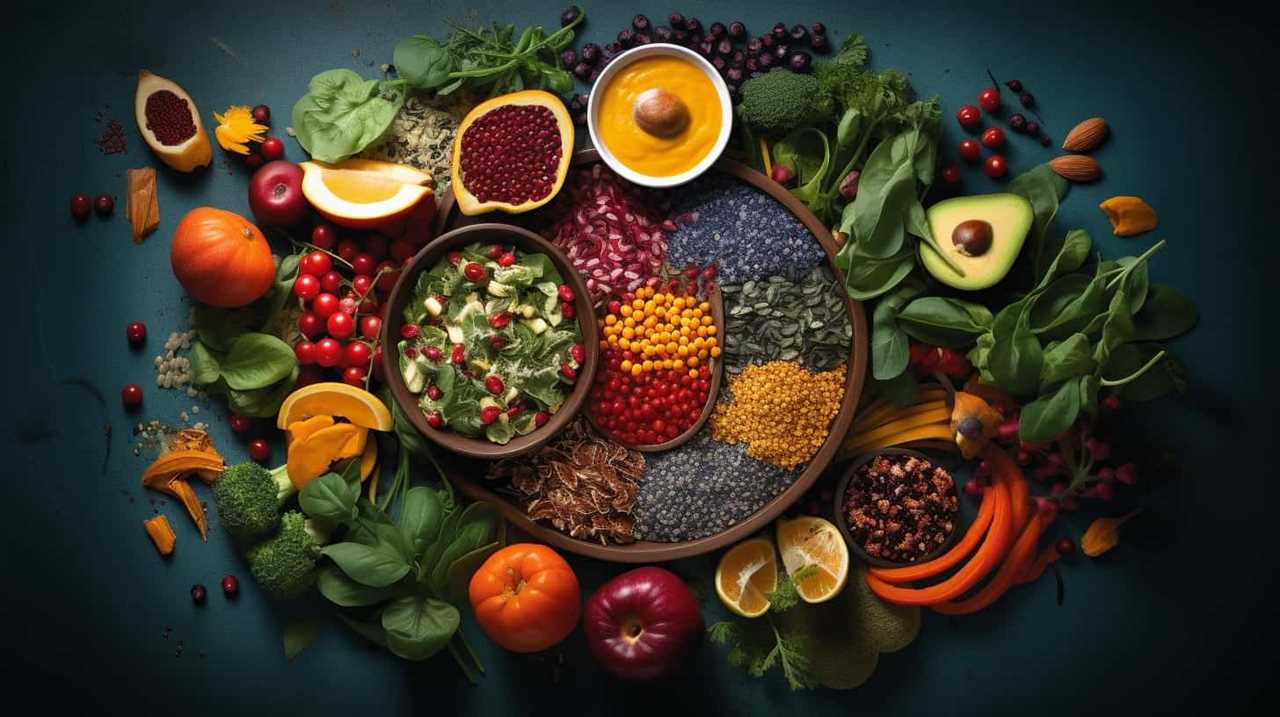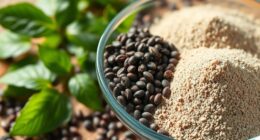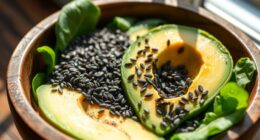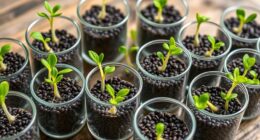What are the advantages of choosing natural methods for seed cultivation?
Aren’t we tired of relying on harmful chemicals that damage our environment?
In this article, we delve into the benefits of organic cultivation.
We explore natural pest and disease control methods, sustainable soil management techniques, and the importance of enhancing biodiversity for higher yields.
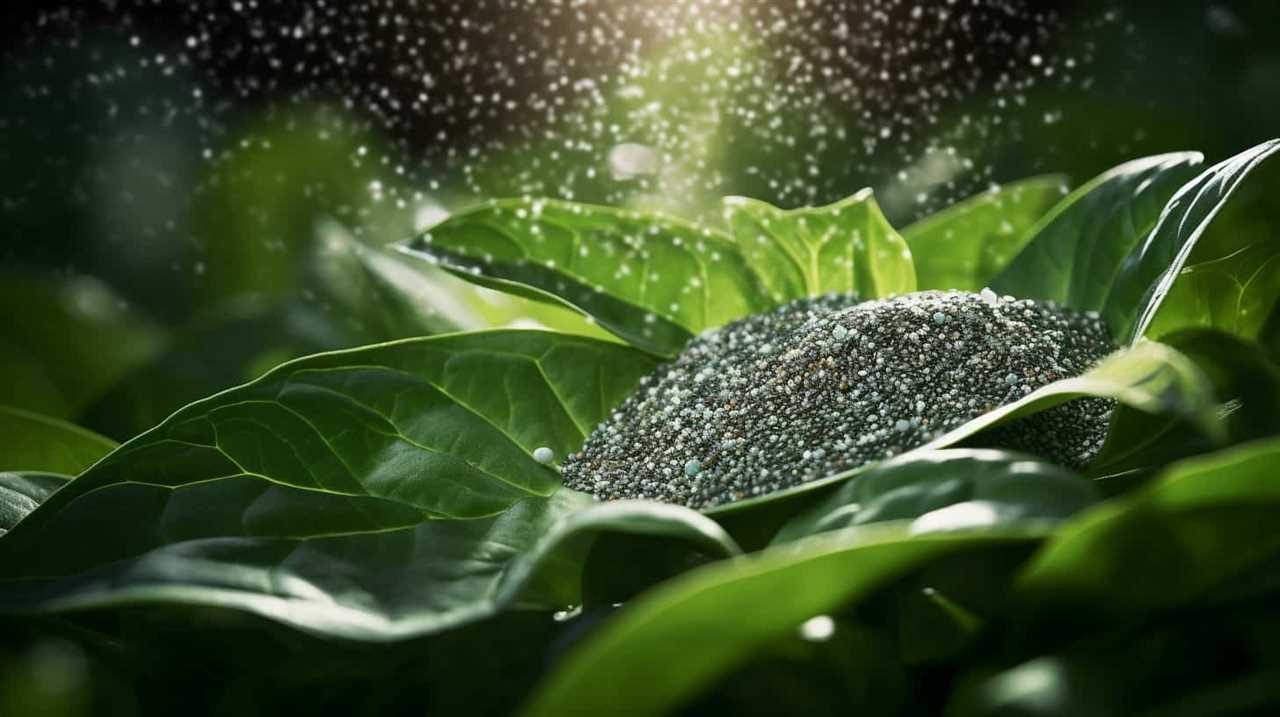
By opting for these natural approaches, we not only promote environmental conservation but also contribute to a healthier and more sustainable future for seed cultivation.
Key Takeaways
- Promotes sustainable farming practices
- Minimizes environmental pollution and protects biodiversity
- Reduces dependence on chemical inputs
- Contributes to the sustainability of ecosystems
Benefits of Organic Chia Cultivation
In our experience, organic chia cultivation has proven to be highly beneficial for several reasons.
Firstly, it promotes sustainable farming practices, ensuring the long-term health and productivity of the soil. By avoiding the use of synthetic fertilizers and pesticides, organic chia cultivation minimizes environmental pollution and protects biodiversity.
Furthermore, organic chia is rich in essential nutrients, providing numerous health benefits. It’s a great source of omega-3 fatty acids, fiber, protein, and antioxidants, which support heart health, digestion, and immune function. Additionally, organic chia seeds are gluten-free, making them suitable for individuals with dietary restrictions.
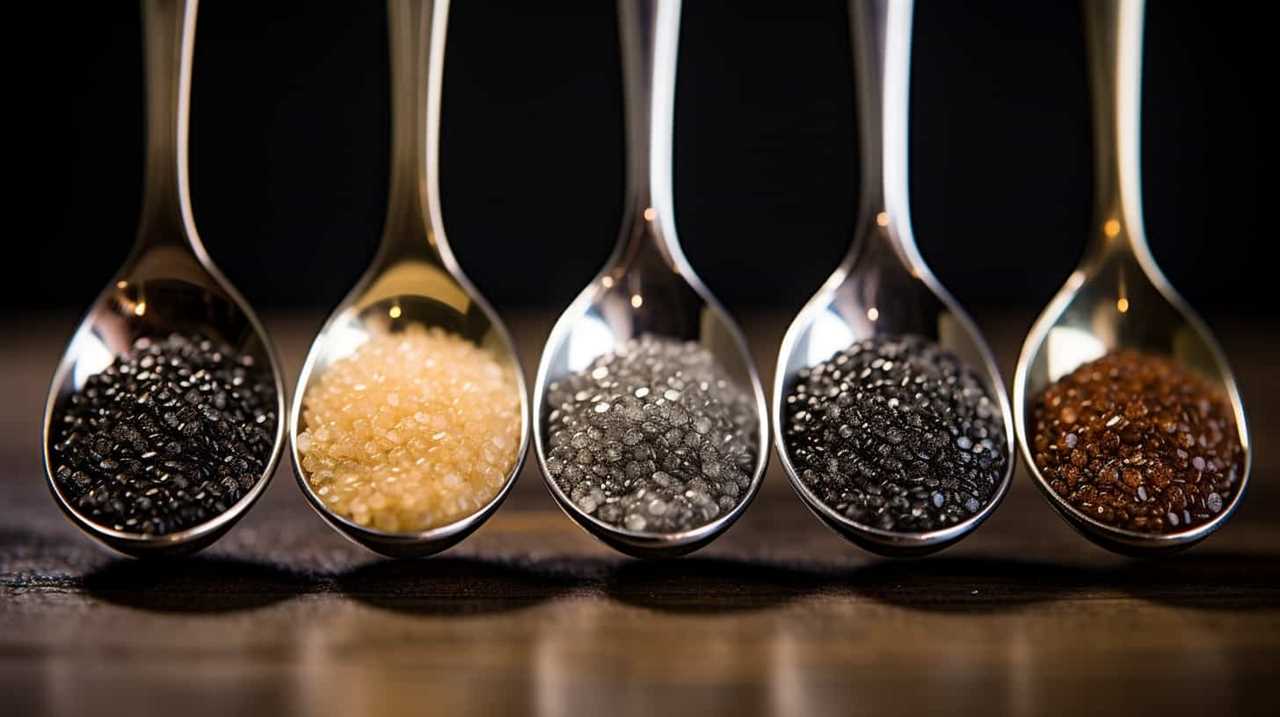
The cultivation of organic chia also contributes to the empowerment of local communities, promoting fair trade and economic growth.
Natural Pest and Disease Control Methods
To effectively manage pests and diseases in seed cultivation, we rely on the use of natural methods, such as through the application of organic compounds. These natural pest and disease control methods offer a more sustainable and environmentally friendly approach compared to conventional chemical pesticides.
One popular natural method is biological control, which involves using beneficial organisms to control pests. This can include introducing predator insects that feed on pests or using bacteria or fungi that attack and suppress pests.
Integrated pest management (IPM) is another effective approach that combines different pest control strategies to minimize chemical pesticide use. This includes monitoring pest populations, implementing cultural practices like crop rotation, and using natural pest control methods as a first line of defense.
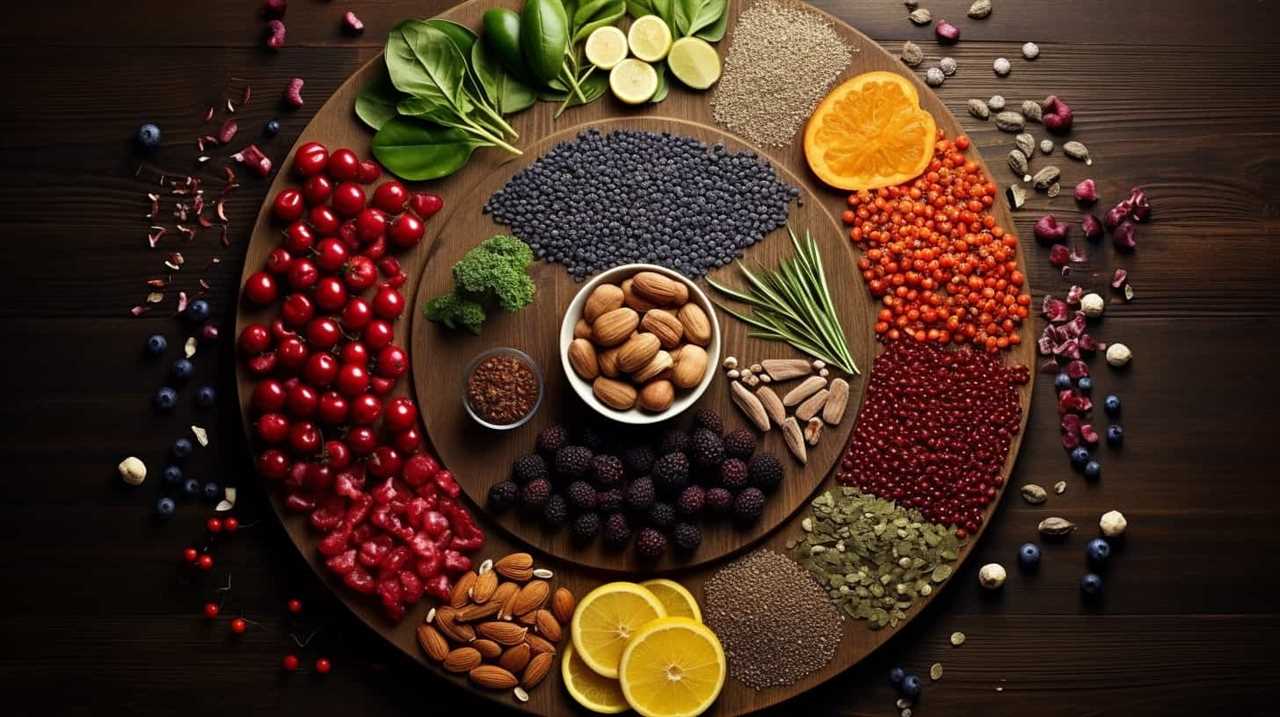
Sustainable Soil Management Techniques
By implementing sustainable soil management techniques, we can effectively improve the overall health and fertility of our soil in seed cultivation. Soil fertility is crucial for successful crop production, and sustainable soil management practices can help maintain nutrient levels and enhance soil structure.
One important technique is crop rotation, which involves alternating the types of crops grown in a particular area. This helps prevent the depletion of specific nutrients and reduces the risk of pest and disease buildup. Additionally, crop rotation improves soil structure by promoting the growth of different root systems, which in turn enhances water and nutrient retention.
These sustainable soil management techniques not only benefit the immediate crop yield but also contribute to long-term soil health and sustainability.
Transitioning into the subsequent section, enhancing biodiversity for higher yields also plays a vital role in sustainable seed cultivation.
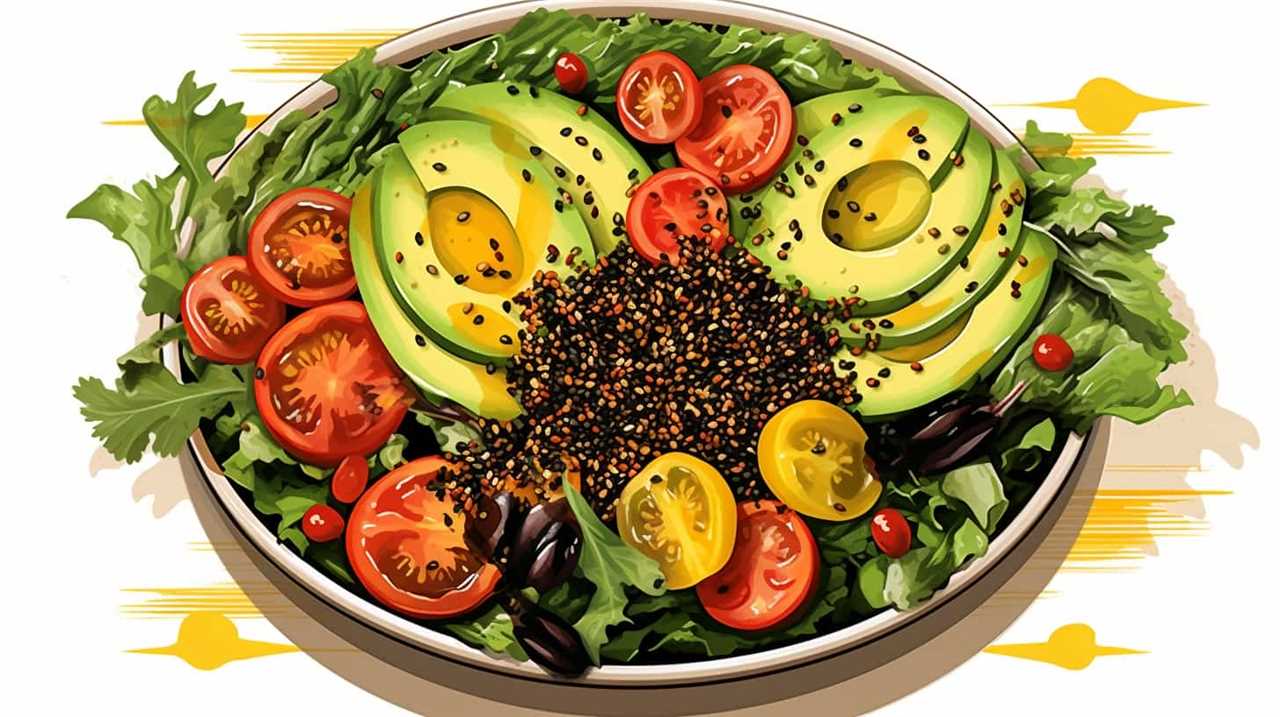
Enhancing Biodiversity for Higher Yields
We can achieve higher yields in seed cultivation through actively promoting and fostering biodiversity within our agricultural systems. Increasing crop diversity is a key component of ecological farming practices, as it helps to create a balanced and resilient ecosystem. By cultivating a wide range of crops, we can enhance soil fertility, control pests and diseases, and reduce the dependence on chemical inputs. Diverse crop rotations also improve nutrient cycling and soil structure, leading to healthier plants and increased yields. Additionally, biodiversity in agricultural systems promotes the presence of beneficial organisms such as pollinators and natural predators, further enhancing crop productivity. By embracing ecological farming practices and prioritizing the preservation and promotion of biodiversity, we can ensure higher yields and sustainable agricultural systems for future generations.
In order to promote environmental conservation in seed cultivation, we need to adopt sustainable practices that minimize negative impacts on the ecosystem.
Promoting Environmental Conservation in Seed Cultivation
In order to promote environmental conservation in seed cultivation, our focus should be on implementing natural techniques. By reducing our carbon footprint and preserving genetic diversity, we can contribute to the sustainability of our ecosystems.
One way to reduce our carbon footprint is by using organic fertilizers and natural pest control methods. Synthetic fertilizers and pesticides often release harmful greenhouse gases into the atmosphere, contributing to climate change.
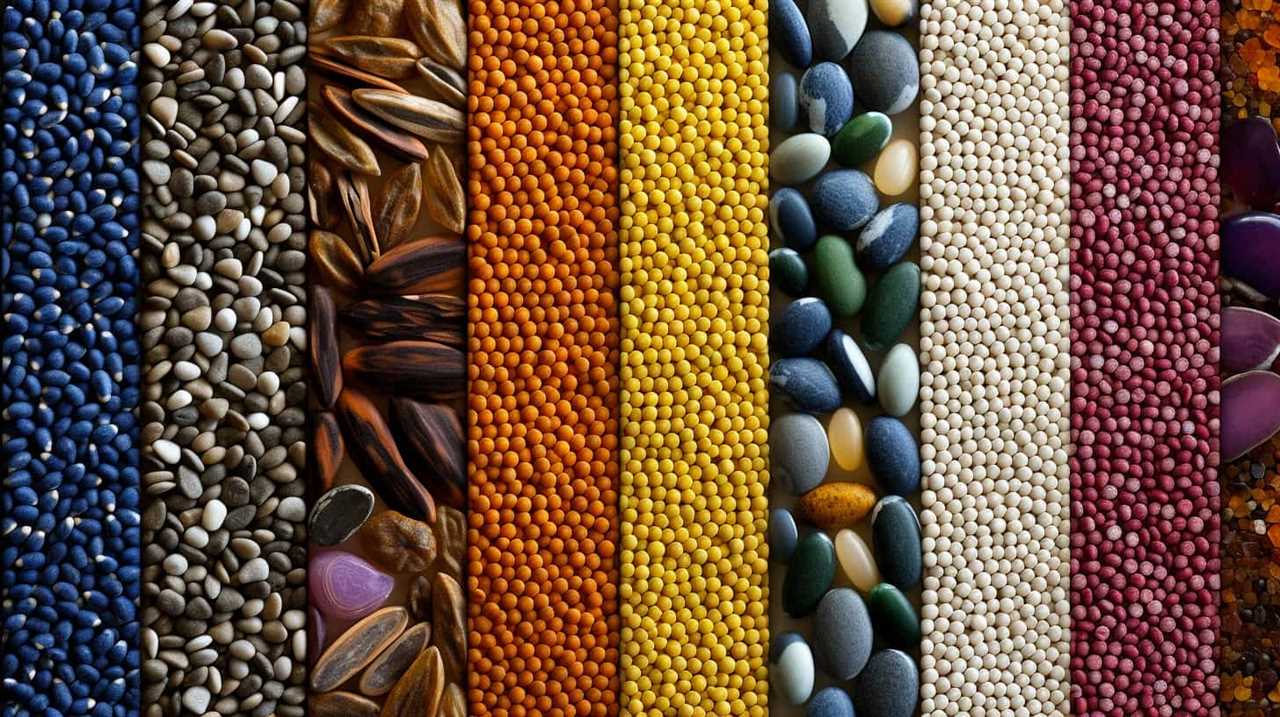
Additionally, promoting genetic diversity in seed cultivation is essential for preserving the resilience of our crops and ecosystems. By cultivating a wide variety of plant species, we can ensure that our agricultural systems are more resistant to pests, diseases, and changing environmental conditions.
Implementing these natural techniques won’t only benefit the environment but also lead to healthier and more sustainable food production.
Conclusion
In conclusion, opting for natural techniques in seed cultivation offers numerous benefits.
From organic chia cultivation to sustainable soil management, these methods promote environmental conservation and enhance biodiversity, resulting in higher yields.
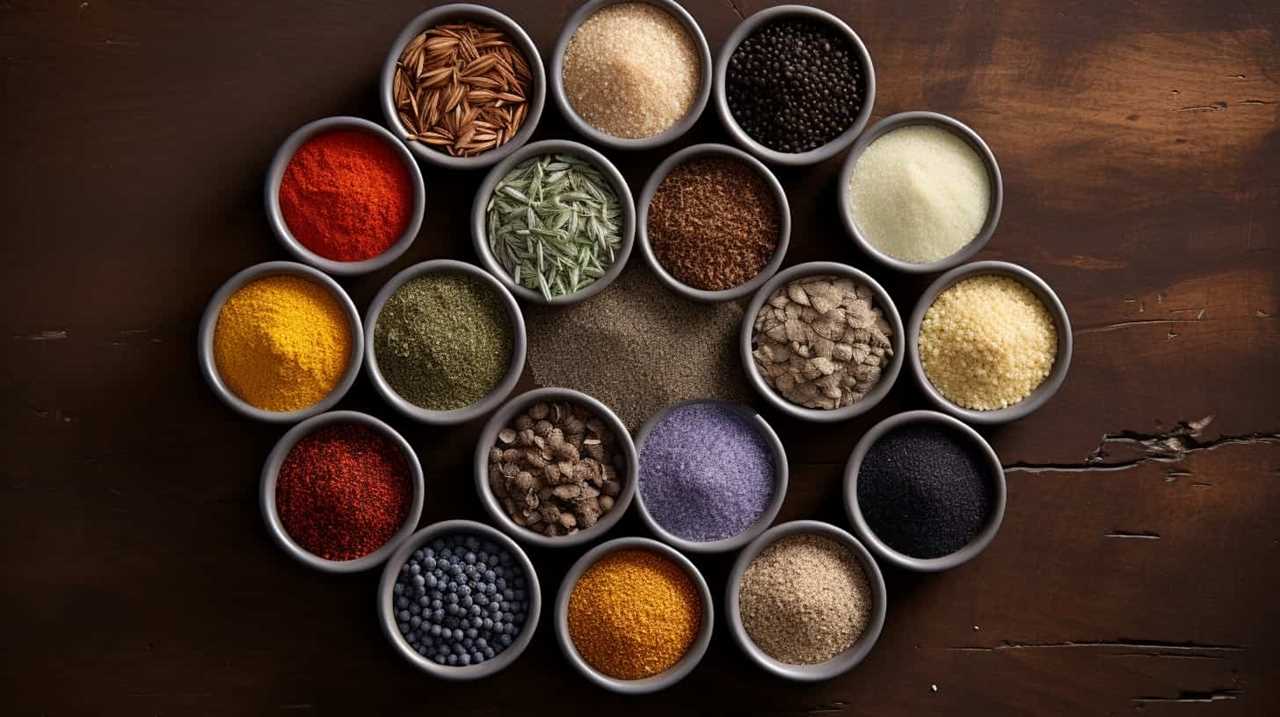
Moreover, the utilization of natural pest and disease control methods ensures the health and quality of the seeds.
By embracing these practices, we can contribute to a more sustainable and resilient agricultural system, ensuring a healthier future for both our crops and the planet.










